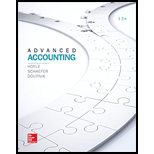
Historically, what factors contributed to the diversity of accounting systems worldwide?
Identify the factors which have contributed to the diversity of accounting system worldwide.
Answer to Problem 1Q
Below listed five items are major factors that have contributed to the diversity of accounting system worldwide:
1) Legal System
2) Taxation
3) Financing System
4) Inflation, and
5) Political and Economic Ties
Explanation of Solution
1) Legal System: The type of legal system followed by the country determines if the primary source of accounting rules was the government body or the accounting profession or other non-government body. The way the accounting system was developed in any particular country leads to diversity in accounting rules and standards.
2) Taxation: Companies can use different accounting practice for financial reporting purpose and for tax purpose therefore to reduce the tax liability companies uses different accounting system.
3) Financing System: The type of financial reporting system a county uses are also determined by the prevailing equity financing system in a county. Countries with strong equity-outsider financing system generally use Class A accounting system which provides more disclosures and does not follow tax rules. Contrary to this, countries with weak equity-outsider financing system follows Class B accounting system which is more conservative, disclosure is not very extensive and follows tax rules.
4) Inflation: Inflation is also another factor for different accounting systems. Therefore, countries which witnessed persistently high inflation rates developed accounting rules for inflation adjustment of historical cost amounts.
5) Political and Economic Ties: Through political and economic linkages, accounting rules were transferred from one county to another. For example, due to colonialism, England and France have transferred their accounting rules to the different countries around the globe.
Want to see more full solutions like this?
Chapter 11 Solutions
Soft Bound Version for Advanced Accounting 13th Edition
- The Cavy Company estimates that the factory overhead for the following year will be $1,620,000. The company has decided that the basis for applying factory overhead should be machine hours, which is estimated to be 45,000 hours. Calculate the predetermined overhead rate to apply factory overhead. Helparrow_forwardPlease solve this problem general accounting questionarrow_forwardThe Cavy Company estimates that the factory overhead for the following year will be $1,620,000. The company has decided that the basis for applying factory overhead should be machine hours, which is estimated to be 45,000 hours. Calculate the predetermined overhead rate to apply factory overhead.arrow_forward
 Financial And Managerial AccountingAccountingISBN:9781337902663Author:WARREN, Carl S.Publisher:Cengage Learning,
Financial And Managerial AccountingAccountingISBN:9781337902663Author:WARREN, Carl S.Publisher:Cengage Learning, Financial AccountingAccountingISBN:9781337272124Author:Carl Warren, James M. Reeve, Jonathan DuchacPublisher:Cengage LearningPrinciples of Accounting Volume 2AccountingISBN:9781947172609Author:OpenStaxPublisher:OpenStax College
Financial AccountingAccountingISBN:9781337272124Author:Carl Warren, James M. Reeve, Jonathan DuchacPublisher:Cengage LearningPrinciples of Accounting Volume 2AccountingISBN:9781947172609Author:OpenStaxPublisher:OpenStax College Intermediate Accounting: Reporting And AnalysisAccountingISBN:9781337788281Author:James M. Wahlen, Jefferson P. Jones, Donald PagachPublisher:Cengage LearningPrinciples of Accounting Volume 1AccountingISBN:9781947172685Author:OpenStaxPublisher:OpenStax College
Intermediate Accounting: Reporting And AnalysisAccountingISBN:9781337788281Author:James M. Wahlen, Jefferson P. Jones, Donald PagachPublisher:Cengage LearningPrinciples of Accounting Volume 1AccountingISBN:9781947172685Author:OpenStaxPublisher:OpenStax College




